The IBM 7690 is a clinical computer that folds into itself. It was designed for mounting on a wall.
Strangely, there is little information on the internet about this product.
There is a PubMed abstract on this computer:
Witkowski JA. Microcomputers in nursing practice: IBM 7690 clinical workstation, Part I. J Pediatr Nurs. 1992 Apr;7(2):147-8.
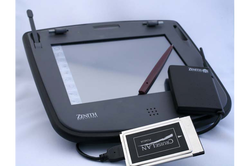
The first hospital based Tablet I saw was the Zenith CruisePad — it basically was a remote client as you required a Windows NT server to serve up the applications.
Zenith Data Systems CruisePad
Thin Client, Windows 3.1, (1995)
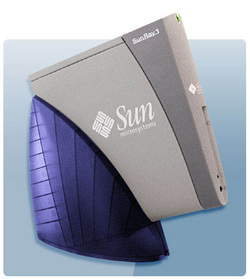
Thin clients then came along — and this was another way to serve up applications from a more powerful server class machines.
Thin clients also allowed more control of the desktop environment in terms of viruses and non-approved applications (and even usb keys)
Virtual Desktop, 1280×1024 (1999)
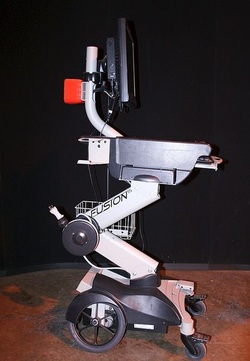
HP NeoWare e370 Thin Client / eFusion Cart
17 inch, Windows XP Embedded, 1ghz, 512mb flash memory (2006)
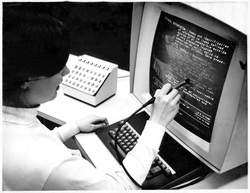
The old TDS 7000 Oscar system at the Foothills Medical Centre (FMC) used light pens instead of mice. Light pens only work with CRT monitors — so since the world has gone to LCD screens they are no longer in use.
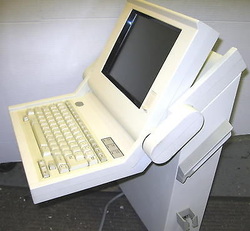
The IBM 7690 never made it into field use. Its soldered-in 8086 chip doomed it. Parts for 5000 units were manufactured by IBM, but only a few hundred were assembled and used for development. The beta sites for the Patient Documentation System software (for which the 7690 was designed) used a 1st generation IBM “clam shell” laptop (I can’t recall if they were called Thinkpads) with an external touch-screen that was fitted over the laptop screen. The entire project was terminated when IBAX was acquired by HBOC who had a competitive bedside documentation solution.
Great reading your post